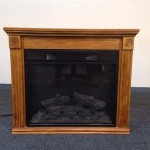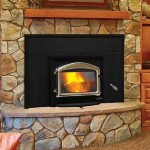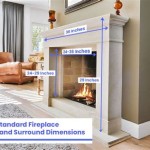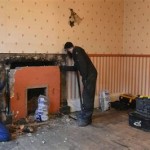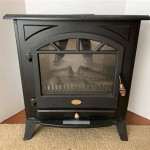Warnock Hersey Wood Fireplace Parts: Understanding and Maintaining Your Heating Appliance
Warnock Hersey (WH) wood fireplaces, also sometimes seen as Warnock Hersey International (WHI), represent a legacy of quality and safety in the hearth industry. While the company itself may have undergone transitions and acquisitions over time, fireplaces bearing the Warnock Hersey certification mark continue to operate in many homes. Maintaining these appliances requires understanding the specific parts they comprise and how to properly care for them. This article delves into the realm of Warnock Hersey wood fireplace parts, offering insights into identification, common replacement needs, and maintenance considerations.
It's crucial to understand that finding parts specifically branded "Warnock Hersey" can be a challenge, as the original manufacturing might not be directly accessible. However, the principles of fireplace engineering and part functionality remain constant. Many aftermarket parts are designed to be compatible with a range of fireplace models, including those originally certified by Warnock Hersey. The key is to identify the specific part needed based on its function and dimensions, rather than solely relying on finding a component with the original manufacturer's branding.
Identifying Common Warnock Hersey Wood Fireplace Parts
Successfully sourcing replacement parts hinges on accurately identifying the component requiring attention. A thorough inspection of the fireplace, coupled with a review of any available documentation (owner's manual, installation instructions), is the first step. Common parts found in Warnock Hersey wood fireplaces include:
Firebricks: These refractory bricks line the firebox, protecting the surrounding metal structure from the intense heat of the fire. Firebricks are subject to wear and tear, cracking and crumbling over time. Replacement is necessary when significant damage occurs, as compromised firebricks reduce the fireplace's efficiency and increase the risk of overheating the surrounding structure. Universal firebricks are available in standard sizes and can be cut to fit specific fireplace dimensions. Consider the density and heat resistance of the firebrick when selecting replacements.
Baffles: Baffles are typically metal plates located at the top of the firebox. Their primary function is to direct the flow of combustion gases, increasing the residence time of these gases in the firebox. This promotes more complete combustion, reducing emissions and increasing the fireplace's efficiency. Baffles can warp or burn through over time due to the extreme heat. When replacing a baffle, ensure that the new baffle is of the same material and dimensions as the original to maintain proper airflow and combustion.
Glass Doors: Glass doors provide a barrier against sparks and embers escaping the firebox, while also allowing for a view of the flames. Damaged glass doors can compromise safety and efficiency. Replacement glass should be high-temperature rated to withstand the heat generated by the fire. Ensure the replacement glass is the correct size and thickness for the fireplace model. Always consult the manufacturer's specifications for proper glass replacement procedures.
Gaskets: Gaskets are used to create a seal between different parts of the fireplace, such as the glass doors and the firebox. These seals prevent air leaks, ensuring proper combustion and preventing smoke from entering the room. Gaskets deteriorate over time and require periodic replacement. When replacing gaskets, use high-temperature silicone or fiberglass gasket material. Ensure the gasket is the correct size and shape to create a tight seal.
Air Controls: Air controls regulate the amount of air entering the firebox, controlling the intensity of the fire. Damaged or malfunctioning air controls can lead to inefficient burning and excessive smoke. Replacement air controls should be compatible with the fireplace model and function smoothly, allowing for precise adjustment of the airflow. Consider the material and construction of the replacement air control to ensure longevity and resistance to heat.
Andirons and Grates: Andirons and grates support the firewood within the firebox, allowing for proper airflow around the logs. These components are subject to high temperatures and can corrode or break over time. Replacement andirons and grates should be made of durable materials such as cast iron or steel. Ensure the replacements are appropriately sized for the firebox to maintain optimal airflow and fuel combustion.
Flue Collars and Connectors: Flue collars connect the fireplace to the chimney flue. These components must be in good condition to ensure proper venting of combustion gases. Corroded or damaged flue collars can leak smoke and carbon monoxide into the home. Replacement flue collars should be made of durable materials such as stainless steel or galvanized steel. Ensure the replacement collar is the correct size and diameter to create a tight seal with the chimney flue.
Damper Assemblies: Dampers control the airflow through the chimney when the fireplace is not in use, preventing drafts and heat loss. Damaged or malfunctioning dampers can compromise energy efficiency and allow for unwanted airflow. Replacement dampers should be compatible with the fireplace model and operate smoothly. Consider the material and construction of the replacement damper to ensure longevity and resistance to corrosion.
Circulation Fans (if applicable): Some Warnock Hersey fireplaces may have included circulation fans to distribute heat more efficiently. These fans can malfunction over time and require replacement. When replacing a circulation fan, ensure the new fan has the same voltage and amperage ratings as the original. Consider the noise level and airflow capacity of the replacement fan to ensure optimal performance.
Sourcing Replacement Parts and Ensuring Compatibility
Once the specific part needing replacement has been identified, the next step involves sourcing a suitable replacement. While finding parts explicitly labeled "Warnock Hersey" may be difficult, many aftermarket manufacturers produce components designed to be compatible with a variety of fireplace models. Consider the following when sourcing replacement parts:
Dimensions and Specifications: Accurate measurements are critical. Measure the existing part carefully and compare these measurements to the specifications of the replacement part. Pay attention to length, width, thickness, and any other relevant dimensions. Consider factors like the type of connection (threaded, flanged, etc.) and the location of mounting holes.
Material: The material of the replacement part is crucial for ensuring durability and performance. For components exposed to high heat, such as firebricks and baffles, use refractory materials designed to withstand extreme temperatures. For structural components, consider durable materials such as cast iron or steel.
Safety Certifications: Look for parts that meet relevant safety standards. While the part may not be explicitly "Warnock Hersey," it should be certified by a recognized testing laboratory (e.g., UL, CSA) to ensure it meets safety requirements for fireplace components.
Professional Consultation: If unsure about the correct replacement part or the installation process, consult a qualified fireplace technician. A professional can help identify the correct part, ensure compatibility with the fireplace model, and perform the installation safely and correctly.
Online Retailers and Hearth Supply Stores: Online retailers specializing in fireplace parts offer a wide selection of components. Hearth supply stores, both online and brick-and-mortar, can also provide valuable assistance in identifying and sourcing the correct replacement parts. Be prepared to provide detailed information about the fireplace model and the specific part needed.
Maintenance Practices for Prolonging the Life of Warnock Hersey Fireplace Parts
Regular maintenance is essential for prolonging the life of Warnock Hersey fireplace parts and ensuring the safe and efficient operation of the appliance. Proper maintenance practices include:
Regular Cleaning: Clean the firebox regularly to remove ash and debris. This helps prevent corrosion and allows for better airflow. Use a fireplace shovel and brush to remove ash from the firebox. Consider using a vacuum cleaner specifically designed for ash removal.
Chimney Sweeping: Have the chimney professionally swept at least once a year, or more frequently if the fireplace is used regularly. Chimney sweeping removes creosote buildup, which is a highly flammable substance that can cause chimney fires. A clean chimney ensures proper venting of combustion gases and reduces the risk of carbon monoxide poisoning.
Gasket Inspection: Regularly inspect the gaskets around the glass doors and other components for signs of wear and tear. Replace damaged gaskets promptly to prevent air leaks and ensure proper combustion.
Air Control Maintenance: Ensure that the air controls operate smoothly and are free from obstructions. Lubricate the air controls as needed to prevent sticking and ensure precise airflow adjustment.
Firebrick Inspection: Regularly inspect the firebricks for cracks and damage. Replace damaged firebricks promptly to protect the firebox and maintain the fireplace's efficiency.
Proper Fuel Usage: Burn only seasoned firewood in the fireplace. Burning green or wet wood produces more smoke and creosote, which can damage the fireplace and chimney. Ensure the firewood is properly sized for the firebox to prevent overcrowding and ensure proper airflow.
Annual Inspection: Schedule an annual inspection by a qualified fireplace technician. A professional can identify potential problems and perform necessary maintenance to ensure the safe and efficient operation of the fireplace.
By understanding the common parts of a Warnock Hersey wood fireplace, sourcing compatible replacements, and implementing proper maintenance practices, homeowners can ensure the longevity and safe operation of their heating appliance. While finding parts explicitly branded "Warnock Hersey" may present a challenge, the principles of fireplace engineering and proper care remain paramount for maintaining a warm and safe home environment.

Warnock Hersey Wood Stove Manuals Parts Models Heat Breeze

Aspen Wood Stove 1920 The Cozy Cabin Fireplace Parts

Small Winterwarm Insert 2080 2082 2084 The Cozy Cabin Stove Fireplace Parts
Warnock Hersey S24xe Wood Stove My Tractor Forum

How To Identify The Make Model And Serial Number Of Your Appliance
Warnock Hersey Wood Stove Help Hearth Com Forums Home

Napoleon Parts

Hot Blast Stove Parts

S126 Century Wood Stove Parts At Fireplaceparts Com

Majestic Gas Fireplace G342n G342l G342an G342al The Cozy Cabin Stove Parts
Related Posts


